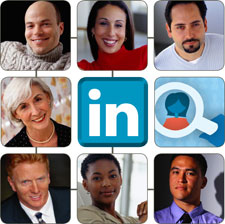
With nearly two million nonprofit board seats open, good board members are hard to find. Most nonprofits know that looking for board members can be time-consuming and frustrating. I’ve been there, on the hunt for people who have the expertise and passion to make a positive contribution to the nonprofit I care about.
I have served on two boards, including Governance Matters, which strengthens boards in NYC through advocacy, education and resources. Now I serve on the board of Praxis Housing. We provide housing to the chronically homeless who have HIV/AIDS, mental health issues, chemical dependency, and other special needs.
Praxis is expanding its six person board to 11. We knew what skills we wanted and tried all the usual ways. In the past, we had success with BoardServeNYC, a United Way initiative; referrals; direct asks, among other tactics. Recently we started asking umbrella organizations, such as legal and nursing associations for help recruiting board members. Many of these organizations have programs that match their members with board opportunities.
But we still weren’t finding the board members we needed. I’ve been a fan of LinkedIn and believed it could be used to fill the gaps in our board that we still had. This was my chance to put my teachings to work for Praxis. And the timing is right for nonprofits to take advantage with LinkedIn’s recent announcement of LinkedIn Board Connect, which makes one its premium services available at no charge. It allows your organization to search for professionals to join your board. Although the recruitment process for Praxis board members isn’t finished, I’ve learned a lot!
For those nonprofits who are intrigued by LinkedIn but don’t know how to get started using, here’s the lessons I’ve learned:
1.) Know what you’re looking for: The Praxis board discussed the expertise that is most crucial for us to have on the board. We also wanted to increase the diversity of the board. If you haven’t evaluated your board before, you can use this board tune up kit, produced by board coach Michael Davidson, as a starting point. Evaluating your board is something you should do regularly but it must done before setting out to find new board members.
2.) Build Your Network Before You Need It: Board Connect is free to one person on the nonprofit’s leadership team, but if that person doesn’t have a critical mass of connections (500+ is best, 350 will do), your connections are not going to lead you to a big enough pool of people to find the perfect match. Don’t despair! A board member or a consultant may have that critical mass of connections. If necessary, pay for someone to have a LinkedIn premium account so he or she can do the search and reach out for you. Chances are you won’t need to pay for the service for more than a few months. Or, better yet, use this as an opportunity to get connected to others on LinkedIn.
3.) Experiment with your search: Don’t be afraid to play around a bit and try different search parameters. For Praxis,combing geography (a 10 mile radius from Praxis headquarters) and skills (legal, real estate, and HIV/AIDS expertsie) with keywords such as “homelessness” and “volunteering” that might indicate an interest in our cause, limited the pool of people who came up in the search results. So I dropped the words homelessness and volunteering from my search. Marc W. Halpert, a LinkedIn trainer, helped a Connecticut nonprofit search for board members. He found that using keywords related to its mission was critical.
4.) Email directly or use InMail: Halpert found the right people for his nonprofit client among his first degree connections. I found them among my second degree connections (people who know people I know). With first degree connections, you can send an email directly; you don’t need a premium LinkedIn account. For second degree connections, you either have to ask someone to make an introduction (this is time consuming and leads to a much lower response rate) or you need to use LinkedIn’s InMail service. Happily, Talent Finder, a premium service, is provided free to nonprofits as part of Board Connect.
5.) Build relationships: While approaches to candidates can’t be cut and dried, my typical process started with a 10-minute phone call. If the candidate seemed interested, I arranged a breakfast or lunch with Svein Jorgensen, CEO of Praxis, and other members of the governance committee. Candidates were then encouraged to visit one of the organization’s shelters to meet clients and staff. Since we’re breaking ground on a new facility in the Bronx on October 23, 2012, we invited everyone to this.
All the prospects said they were flattered by my outreach. Interestingly, several also mentioned that they had been thinking of volunteering for a nonprofit so my timing was perfect.
The overall recruitment process will take three to four months and will result in adding two or three members to the board of Praxis.
If you have questions, Halpert, Maria Semple, and I will be doing an interactive webinar about nonprofits and LinkedIn on Tuesday, October 2 from 3-4pm EST. Join us! We’ve all got tips about making LinkedIn work for nonprofits.
